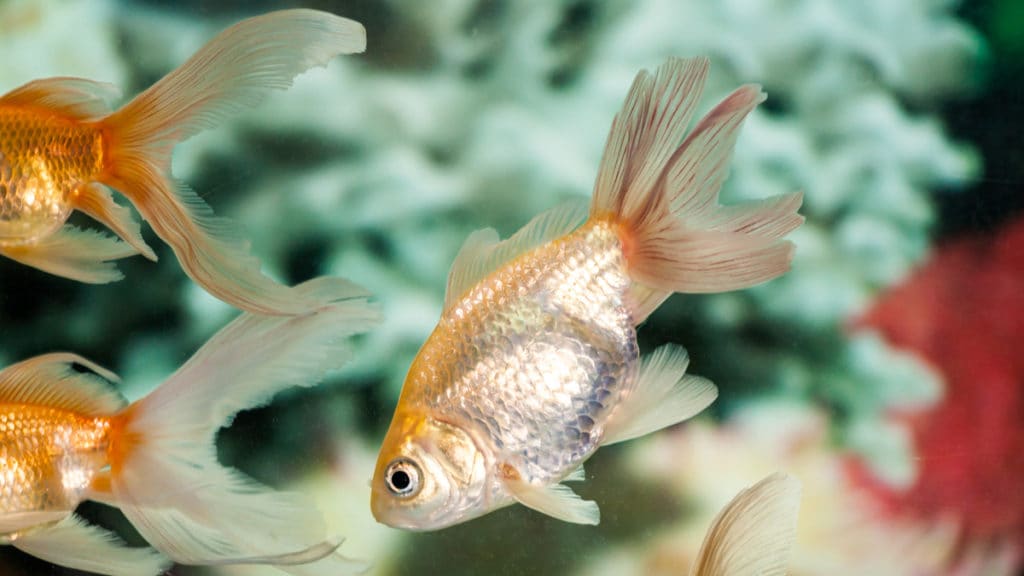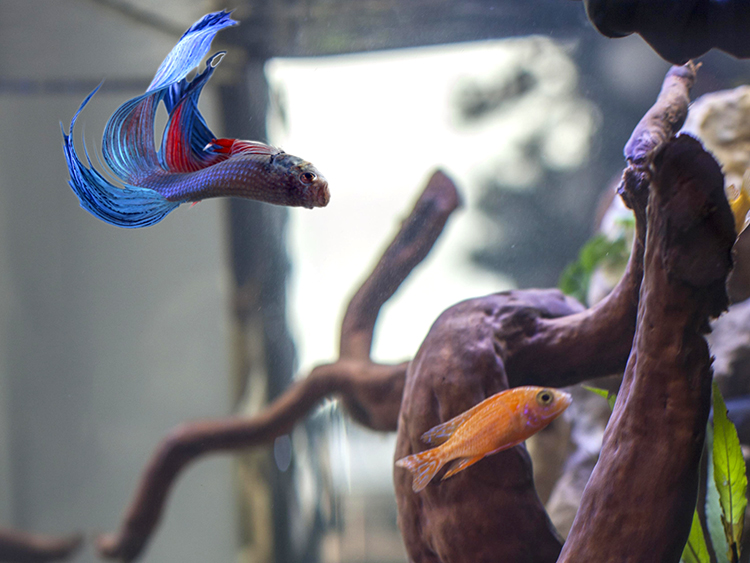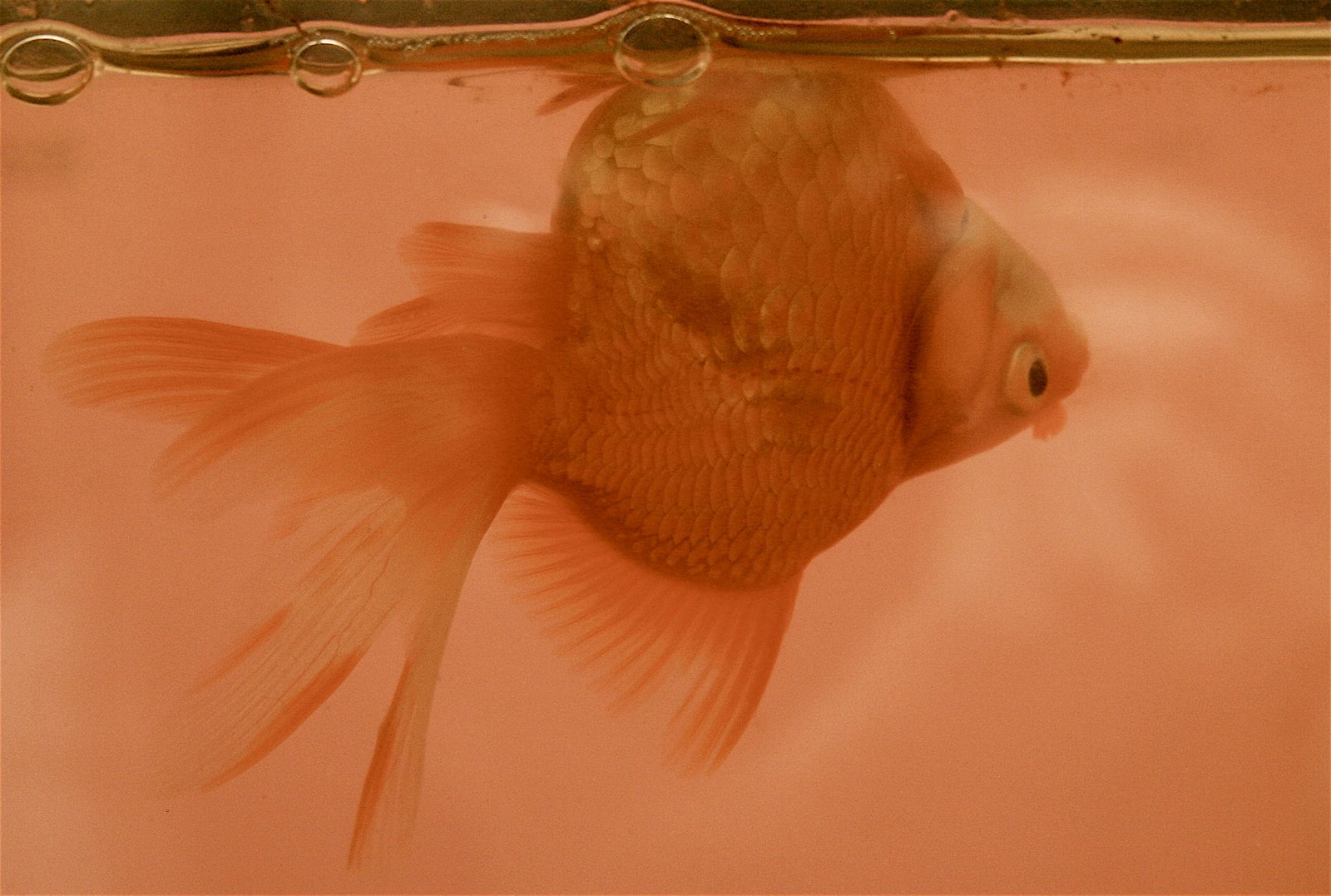Swim bladder disease in aquarium fish can be treated through water maintenance, feeding changes, and possible antibiotics. Fasting the fish for three days may help if an enlarged stomach or intestine is causing the disease.
If these actions do not improve the fish’s condition, a broad-spectrum antibiotic can be considered. It is important to address swim bladder disease promptly, as severe cases can result in stress and premature death.

Credit: be.chewy.com
Understanding Swim Bladder Disease
Swim Bladder Disease in aquarium fish can be treated through a combination of water maintenance, changes in feeding habits, and possible antibiotics. If the fish’s condition does not improve, a broad-spectrum antibiotic may be necessary to treat the disease effectively.
What Is Swim Bladder Disease?
Swim bladder disease is a common ailment that affects aquarium fish, particularly those with a swim bladder. The swim bladder is an internal gas-filled organ that helps fish control their buoyancy and maintain their position in the water column. When the swim bladder becomes compromised or diseased, it can lead to problems with the fish’s ability to swim properly.Symptoms Of Swim Bladder Disease
Recognizing the symptoms of swim bladder disease is crucial for early detection and treatment. Some common symptoms include:- Difficulty swimming upright or floating on one side
- Sinking or floating to the top of the tank
- Loss of balance
- Struggling to reach the bottom of the tank
- Decreased appetite
- Weight loss
Causes Of Swim Bladder Disease
Understanding the causes of swim bladder disease can help prevent and manage the condition effectively. Some factors that can contribute to swim bladder disease include:- Overfeeding: Providing excessive amounts of food to your fish can lead to overeating and swelling of the swim bladder.
- Dietary issues: A lack of proper nutrition or feeding an improper diet can result in swim bladder problems.
- Constipation: The accumulation of fecal matter can put pressure on the swim bladder, causing it to malfunction.
- Infection: Bacterial or parasitic infections can attack the swim bladder, leading to disease.
- Genetic predisposition: Certain fish species are more prone to swim bladder disease due to genetic factors.
:strip_icc()/GettyImages-115246336-56d7d2e6df0c4ac4926e78ab611c09c6.jpg)
Credit: www.thesprucepets.com
Treatment Options For Swim Bladder Disease
Treatment of swim bladder disease in fish involves water maintenance, feeding changes, and possible antibiotics.
Letting The Fish Fast
If an enlarged stomach or intestine is thought to be the cause of swim bladder disease, the first course of action is to not feed the fish for three days. This gives the fish’s digestive system a chance to rest and recover. It’s important to monitor the fish during this fasting period to ensure it is not showing signs of distress or further deterioration.
Feeding Changes
After the fasting period, it’s crucial to implement feeding changes to avoid potential recurrence or worsening of swim bladder disease. One recommended feeding method is to feed the fish small, easily digestible meals spread throughout the day instead of one large meal. This helps prevent overeating and reduces the risk of the swim bladder becoming affected again.
Use Of Antibiotics
If the fish’s condition does not improve after fasting and feeding changes, it may be necessary to use antibiotics. A broad-spectrum antibiotic, such as the ones available in fish medications, can help eliminate any bacterial infection that may be causing or contributing to swim bladder disease. It’s important to follow the instructions of the medication carefully, including proper dosage and duration of treatment.
Preventing Swim Bladder Disease
Swim bladder disease is a common health issue among aquarium fish that can lead to discomfort and even death if left untreated. However, there are several preventive measures you can take to minimize the risk of swim bladder disease in your fish. By maintaining water quality, choosing the right diet, and avoiding stressful environments, you can significantly reduce the likelihood of your fish developing this condition.
Maintaining Water Quality
One of the key factors in preventing swim bladder disease is maintaining optimal water quality in your aquarium. Poor water conditions can cause stress and weaken the immune system of your fish, making them more susceptible to various health issues, including swim bladder disease. To ensure good water quality:
- Regularly test the water parameters, including temperature, pH level, ammonia, nitrite, and nitrate levels.
- Perform regular water changes to remove accumulated toxins and waste products.
- Keep the aquarium clean by regularly cleaning the substrate, decorations, and filter.
- Ensure proper filtration and aeration to maintain oxygen levels.
Choosing The Right Diet
The diet you provide for your fish plays a crucial role in their overall health and can impact the development of swim bladder disease. Here are some tips for choosing the right diet:
- Provide a balanced diet that includes a variety of high-quality pellets, flakes, and frozen or live foods.
- Avoid overfeeding, as excess food can lead to digestive issues and bloating, contributing to swim bladder problems.
- Consider incorporating fiber-rich foods, such as peas, into their diet, as it can help regulate their digestion and prevent swim bladder issues.
- Feed small portions multiple times a day rather than one large meal to prevent overeating and reduce the risk of swim bladder disease.
Avoiding Stressful Environments
Stress can weaken your fish’s immune system and make them more susceptible to swim bladder disease. To create a stress-free environment for your fish:
- Avoid overcrowding the aquarium, as it can lead to competition for resources and increased stress levels.
- Ensure the tank size is appropriate for the number and species of fish you have.
- Provide hiding places, plants, and decorations to create a secure and comfortable retreat for your fish.
- Handle your fish with care during maintenance and avoid sudden movements or loud noises that can startle them.
By following these preventive measures, you can significantly reduce the risk of swim bladder disease in your aquarium fish. Remember to always monitor your fish’s behavior and seek veterinary assistance if you notice any signs of illness or swim bladder problems.

Credit: pondaquariumproblemsolver.co.uk
Frequently Asked Questions On Swim Bladder Disease And Treatment In Aquarium Fish
How Do You Treat A Fish With A Bad Swim Bladder?
To treat a fish with a bad swim bladder, try feeding it boiled or blanched peas without the outer skin. Let the fish fast for three days if an enlarged stomach or intestine is the cause. Consider using a broad-spectrum antibiotic if the condition does not improve.
How Long Can A Fish Live With Swim Bladder Disease?
The survival time for a fish with swim bladder disease depends on the severity and overall health. With proper care, mild cases may recover within a few days to a couple of weeks. Severe or untreated cases may result in death.
What Do You Feed Fish With Swim Bladder Disease?
Feeding peas to fish with swim bladder disease can help. Remove the skin and boil or blanch them. Mash them into smaller pieces and feed to the fish.
How Much Epsom Salt Do You Put In A Fish Tank With Swim Bladder Disease?
To treat swim bladder disease in a fish tank, add Epsom salt at a ratio of 1 tablespoon per 5 gallons of water.
Conclusion
Swim bladder disease can be a distressing condition for aquarium fish. However, with proper care and treatment, it is possible for fish to recover. Water maintenance, feeding changes, and potential antibiotic use are key aspects of treating this disease. In some cases, feeding boiled peas can provide relief.
If symptoms persist, considering a broad-spectrum antibiotic might be necessary. By following these guidelines, fish owners can give their companions the best chance at a full recovery.


